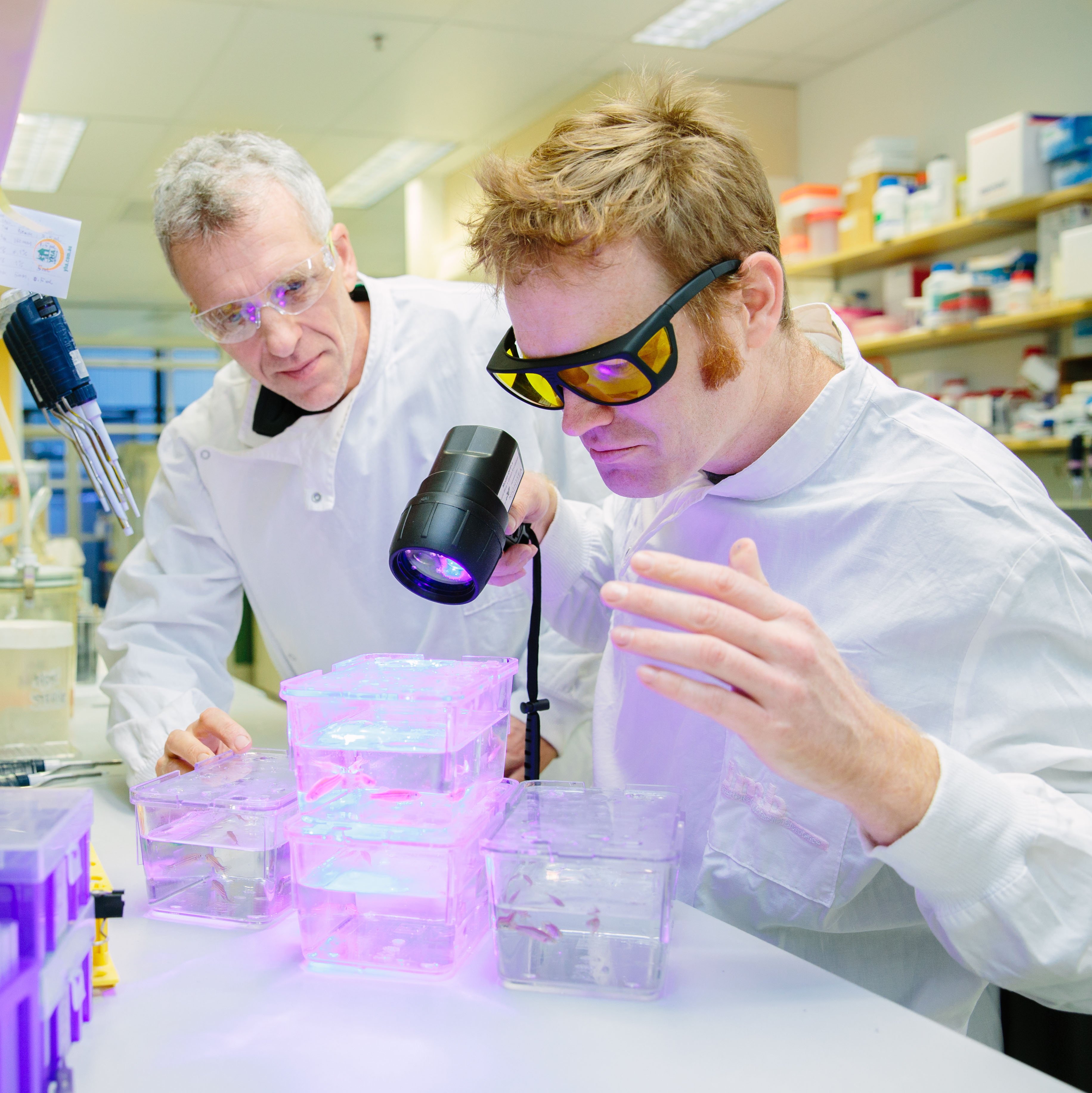A discovery by University of Queensland researchers about the evolution of a tiny fish could have implications for sufferers of muscle diseases such as muscular dystrophy.

Professor Rob Parton and Dr Tom Hall, from UQ’s Institute for Molecular Bioscience (IMB), led a team that used zebrafish to mimic the loss of cellular proteins seen in muscle diseases.
They found switching off the genes in zebrafish that control caveolae, tiny pits on the cell surface, led to a catastrophic collapse of cells in active fish that mirrors the damage seen in muscle diseases.
“We wanted to know why both humans and zebrafish had evolved caveolae, so we used sophisticated gene editing techniques to produce zebrafish embryos lacking in these pits,” Professor Parton said.
The cells with the most caveolae in zebrafish are found in a tube called the notochord, which provides support to the entire embryo before the spine develops.
“The notochord is like a fire hose; it’s very rigid with a tough outer sheath under pressure, so the muscle pulls against this tube when the fish are active, causing the cells to bend and change shape.
“The caveolae help the cells spring back to their original position so if you knock out the caveolae, the cell membrane can’t spring back and breaks instead, causing catastrophic damage to the cells.”
“Conversely, when we anaesthetised the fish without caveolae so they remained still, their cells stayed intact and they were absolutely fine, suggesting that the cells are affected by a lack of caveolae because they are the cells that are constantly moving and changing shape.”
Professor Parton said the ability to model disease mutations in zebrafish, which are genetically similar to humans, provides researchers with a quick method of discovering how systems are affected by disease.
“This discovery is helping us understand diseases associated with loss of caveolae and, in the long term, could assist in the design of strategies to overcome these disease conditions, which include muscular dystrophy and other muscle diseases.”
The discovery suggests the evolution of caveolae, which are only found in vertebrates, was necessary for the development of a stable notochord and consequently for the evolution of animals with spines.
The project, published overnight in the journal Current Biology, was supported by the National Health and Medical Research Council (NHMRC), the Australian Research Council (ARC), The Kids Cancer Project of the Oncology Research Foundation, and the Australian Cancer Research Foundation.
Media enquiries: IMB Communications – 07 3346 2134 or 0418 575 247, communications@imb.uq.edu.au



